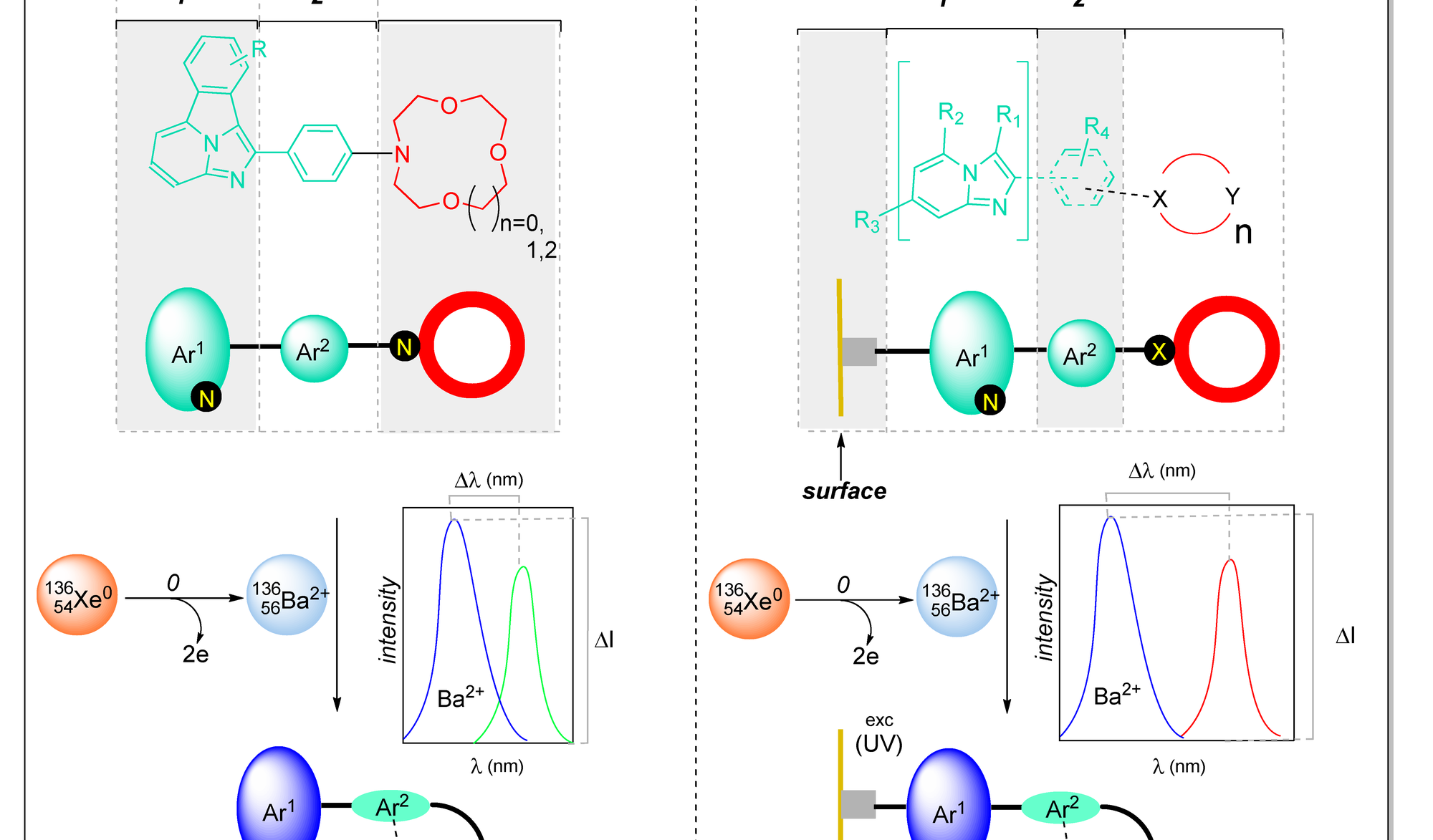Luminescent Organometallic Complexes: Synthesis and Functionalization of Surfaces

Searching for neutrinoless double-beta decays (ββ0ν) is the only practical way to establish if the neutrinos are their antiparticles, a discovery of enormous importance for particle physics and cosmology. Due to the smallness of neutrino masses, the lifetime of ββ0ν is expected to be much longer than the noise associated with the natural radioactive chains making the search very challenging. Identification of ββ0ν decays requires finding a signal that radioactive backgrounds cannot mimic. In particular, the ββ0ν decay of 136Xe could be established by detecting the doubly ionized daughter atom, Ba2+created, in the decay. Such detection could be achieved via a sensor made of a monolayer of molecular detectors. Ba2+ would be captured by one of the chemical entities that act as a fluorescent sensor, giving rise to a new fluorescent complex, which can be subsequently revealed by different technologies, such as using a laser system. The development of such new molecules is a challenge from the chemistry point of view that offers the possibility to contribute to one of the most relevant problems of science. The chemical team has developed a new Fluorescent Bicolour Indicator (FBI) that binds strongly to Ba2+ in dry media and offers a shining difference with the unchelated state of >12000 by introducing a colour shift. This colour shift is due to a perpendicular arrangement between two aromatic units of the fluorophore upon Ba2+ chelation, thus disconnecting both polycyclic systems. The FBI concept is a milestone for the identification of Ba2+ in gaseous detectors and the development of the next generation of experiments. Also, obtaining these molecules, which our group have designed and synthesized, represents a significant milestone in supra-molecular chemistry in the solid-state and the study of the photophysics of fluorescent molecules in a dry environment.
Due to the strong requirements imposed by using a molecule in a real experiment, the capacity to optimize the molecule is of uttermost importance. Our highly modular FBI sensor design, with clearly identified synthon for each property, is perfectly suited for this purpose. Namely, the specificity and selectivity for barium sensing, the fluorescence characteristics, and the capability to create a monolayer on the desired surface can be independently addressed. Although the crown showed the best selectivity for Ba2+ in solution, it should be confirmed in the dry phase; otherwise, it can be substituted by another receptor. For these reasons, in our research group, we want to go further and carry out the synthesis and surface anchoring (ITO) of luminescent organometallic compounds. Optimization of the anchoring process and photophysical characterization of the materials.
That's why the main objectives of this Internships 2022 are:
- Synthesis and characterization of organometallic compounds.
- Structural and photophysical characterization of compounds (absorption and emission) in solution.
- Optimization of the surface anchoring process (ITO).
- Photophysical characterization of supported materials.
- Preparation of results report.
- Presentation in a Seminar.
The candidate should have basic knowledge on organic synthesis. In addition, the student will benefit from to opportunity to work on state-of-the-art instruments for organic and organometallic synthesis. Some of them include detection and structural elucidation techniques, NMR, MS, FITR, etc.
